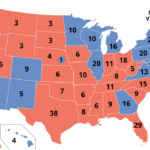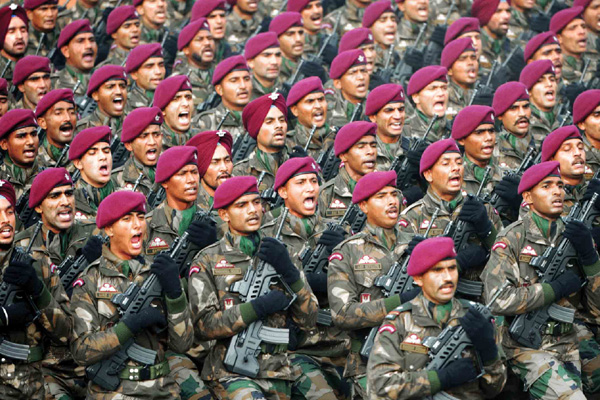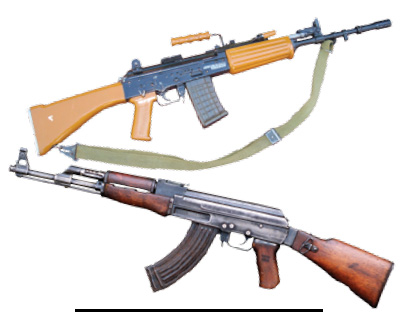- Cover Story
- Governance
- Globe Scan
- Corruption
- State Scan
- Talk Time
- Cover Story
- Governance
- Globe Scan
- Corruption
- State Scan
- Talk Time
Recent Posts
© Copyright 2007 - 2023 Gfiles India. All rights reserved powered by Creative Web INC.GovernanceUN-MADE IN INDIA
For any nation with a large defence force, relying on imported fighting equipment was always going to be an expensive and impractical proposition. Yet in India, which has the fourth largest standing army in the world, developing and manufacturing of indigenous weapon systems remained an area of neglect for more than seven decades. The premature end to the development of the HF-24 fighter aircraft and the case of the lost-and-found blueprints of the Bofors gun are just two instances that highlight this chronic failure. Writes Lt. Gen. JS Bajwa
Lt. Gen.JS BajwaOctober 6, 20187 Mins read89 Views
 Written by Lt. Gen.JS Bajwa
Written by Lt. Gen.JS BajwaTHE Estimates Committee under Murli Manohar Joshi recently presented the 29th Report on “Defence Forces Preparedness: Production and Procurement” to the 16th Lok Sabha. It has reviewed the cap-abilities of the Defence Research and Development Organisation (DRDO), Ordinance Factory Board (OFB) and all the Defence Public Sector Undertakings (DPSUs), which function under the Ministry of Defence (MoD). The Committee assessed their functional efficiencies, their output capacities along with the measures adopted for creating an ecosystem to encourage micro, small and medium enterprises (MSME’s). Thereby understand their ability to support the defence forces in their respective modernisation processes.
The report also studied the level of indigenisation achieved by these units and their contribution to the Make in India initiative of the Prime Minister. It has aptly highlighted the systemic shortfalls and deficiencies. Therefore, it would be pointless to reiterate and list out these. So, rather than dwell only on these prosaic issues, it will be worthwhile to look at the larger, more cardinal factors, of modernisation and preparedness of the forces to fight future wars.
There are certain fundamental realities with regard to a nation and its armed forces. First, it is the government that has to decide whether it needs armed forces. Second, the government has to identify the threats, both external and internal, that it envisages and decides on the optimum size of the force required to secure the nation from both these threats. Third, the government must also state its basic philosophy, whether the armed forces will be defence or offence oriented. Fourth, whether there will be any contingency when there would be a requirement to project an expeditionary force beyond the country’s borders. Fifth, define the role of the air force in support of land operations and its strategic tasks. Similarly, the navy’s role in event of a border war on the nation’s land frontiers. In a reverse option, the role of land forces deployed on the nation’s land frontiers in event of offensive operations being directed by an adversary to capture any of the countries island territories. Sixth, the strategic deterrence capability built so as to secure a window for conduct of conventional military operations against an adversary, which is known to have a hierarchy of nuclear weapons. These are just some of the parameters from a score of other similar parameters not mentioned here.
In India these above mentioned issues are in the domain of the civilian government. In the western countries, and in China, their governments have developed security strategies and prepared security doctrines to support and protect their national interests. This, in turn, dictates the force levels that they are prepared to maintain at all times to protect their national interests. Parallel to this is the continuous and rapid advancement of military technology. Newer technology mandates newer methods of fighting along with commensurate need for reorganisation of units and formations. This, in turn, generates a Revolution in Military Affairs (RMA).
STRATEGY itself is deep, undefined, and always futuristic. Formulating a security strategy is an exercise in the abstract. It basically outlines the security concerns of a country and includes the plans to deal with them. It also needs to be revised periodically. The governments in power in India have not formally put forth a National Security Strategy, which should clearly identify the security concerns and how the government plans to deal with them. As a result the armed forces will take recourse to simplistic “bean count”. This will tantamount to looking at the size of the armed forces—number of personnel, guns, tanks, aircraft and ships of all likely adversaries. As a consequence the forces will be organised and equipped to suitably outmatch all such “bean count” threats.
It must be clearly understood that wars are fought between governments to secure or protect their vital and/or national interests as visualised by them. The military is the hard element of the power available with the government. Once any government decides to resort to use of military force, it must state the aim of the war. Then the military force will fight to secure the objective as given. The military force that stands defeated would put its government in a weaker bargaining position. Invariably, the government of a defeated military force will have to compromise its national interest and succumb to the dictates of the victorious adversary. Therefore, when left to itself, the armed forces will build capacities and capabilities to be able to fight a war in the ‘worst case scenario’ that can befall the nation— two-front war with enemy/enemies using tactical nuclear weapons or atomic demolitions and war of hybrid nature. To be able to be prepared to take on such a daunting task does require a very large standing armed force. Despite the most advance technologies wars when fought will involve measuring victory by the infantry soldiers’ boots on the ground.
A large standing armed force needs to be suitably equipped with weapons that match those held with the adversaries, if not be of a more modern technological generation. Most militaries world over cannot afford to undertake a full replacement of equipment for the whole force at the same time as and when some more modern weapon or weapon systems are developed and available. Consequently, the option is to have a the forces equipped with a desirable mix of approximately 35 percent of equipment of the latest technology, 35-40 percent of equipment, which has been downgraded and is classified as obsolescence and 25-30 percent of weapons and equipment held, which is in the obsolete category. These, in due course, will be phased out as and when more weapons and equipment of newer technology are inducted.
It requires no economic or financial wizardry to comprehend that importing weapons, weapon system and equipment to equip a large standing armed force is a financially perilous undertaking for any nation, leave alone doing that for a developing country with the fourth largest armed force in the world. For a nation, which is home to seven crore people living in extreme poverty, incurring huge expenditure on defence, will be committing political hara-kiri. Besides, as a developing country, the government is facing serious challenges of requisitioning adequate funds for basic development requirements like primary education, social development projects, planned development in the agriculture sector and in construction of a modern network of ports, roads, railway and IWT infrastructure. These constraints will compel any responsible government to exercise extreme parsimony in expending huge funds on defence.

Ergo, to equip and maintain in readiness such a large force, indigenous arms manufacturing is the only solution. Japan, after World War II, and China after the Cultural Revolution, set about to catch up with the world technologically. No method adopted was considered foul or unfair. Reverse engineering, stealing blueprints, honeytrapping and blackmail and later theft of intellectual property were all considered scrupulous and acceptable. Today, Peshawar in Pakistan has a veritable cottage industry of arms manufacturing. Every second house is manufacturing small arms with their in-house bellow fired smelter, foundry, lathe machines and the ubiquitous hammer and tongs. They are producing handmade copies of every pistol, assault rifle, machine gun and rocket launcher available in the world arms market today.
India, on the other hand, did not indulge in these nefarious games so openly due to periodic bouts of ‘severe moral pangs’. As a result, India has been unable to produce a dependable weapon in the last seven decades. The systemic malady is evident in the three cases cited in the subsequent paragraphs.
First one pertains to the development of the Hindustan Fighter-24 (HF-24) by HAL. The then Prime Minister wanted India to be self-sufficient in manufacturing military hardware. Consequently, in 1956-57, a team of aircraft designers under a German, Kurt Tank, were tasked to produce a suitable fighter for the Air Force. The Air Staff Qualitative Requirement listed ambitious and unrealistic capabilities for the fledging HAL. Notwithstanding, the team went about their task and the first prototype flew on 17 June 1961. The HF-24, thereafter was inducted into the Air Force in 1967, and served in three squadrons up to 1990’s. A premature death of an indigenous machine was brought about due to immature short-sighted decisions of the Air Force hierarchy. Had upgrades of HF-24 been allowed to be manufactured, the history of Indian aviation industry would have been different. Also, India would have worked harder to develop its own jet engines to power the later versions of HF-24—inadequately powerful engine was its major shortcoming. Consequently, the whole story of development and production of Tejas would have been very different.
In the western countries, and in China, their governments have developed security strategies and prepared security doctrines to support and protect their national interests. This, in turn, dictates the force levels that they are prepared to maintain at all times
Second case pertains to the INSAS (INdian Small Arms System) family of small arms. It was in the early 1980’s that a decision was taken to develop a 5.56mm rifle. The INSAS included the assault rifle, carbine, Squad Automatic Weapon (SAW) also called Light Machine Gun (LMG). INSAS was finally adopted in 1990. In 1997, the rifle and LMG went into mass production. The carbine remained elusive and was never manufactured. The INSAS rifle and LMG had a number of faults, which had to be constantly attended to. In 2014, the Central Reserve Police Force (CRPF) opted out of having the INSAS rifle as its standard weapon. In 2015 these were replaced with AK-47 by the Home Ministry. In 2017, CRPF accepted the AK-47-based rifle manufactured by the Ordinance Factory Tiruchirappalli – called the Trichy Assault Rifle. All these years, the R&D department of the Ordinance Factory Board (OFB) did not pursue the development of a replacement of the INSAS. This casual and lax attitude has compelled the Army to seek import of modern assault rifles at heavy cost.
Third case pertains to the manufacture of the 155 mm “Dhanush” to meet the demand of the artillery to replace the ageing 155mm Bofors medium gun. In the deal signed with Bofors of Sweden in 1986, India was to receive the detailed drawings of the original Bofors gun. As is evident now, these drawings had been received then, but, mysteriously, lay buried somewhere gathering dust in some dingy cupboard of OFB till these were dugout and dusted in 2015. Soon thereafter, work began on the manufacturing of this weapon from the drawings. The indigenous 155mm gun was fielded for firing trials in 2016 and has since more than surpassed the parameters of the original Bofors gun.
HOWEVER, the mystery of why, for 25 years, these drawings were not used to manufacture a gun despite the original lot of Bofors becoming unserviceable and being phased out, will need to be unearthed and thoroughly probed and brought out in the public domain. This is a sordid case of strategic sabotage. But, strangely, there is deafening silence in this regard and no one is being held accountable.
In light of the foregoing, it is a moot point whether the decision of the Indian Army to reduce its size by 1,50,000 personnel is prudent. It is a separate subject of discussion by itself. Pruning manpower and organisations are easy options that provide some short-term relief. More often than not, the government will always encourage such an option as it will bail the government out from adopting more comprehensive long-term strategic measures. Re-raising forces will be extremely difficult and will always be resisted. The present army’s hierarchy may prune the force levels but will only be presenting a fait accompli to the future generations. Junior officers must be included in all discussions on the subject since then are the ones who will inherit the consequences of decisions on pruning of the forces.
Recent Posts
Related Articles
GovernanceNewsBackdoor entry of Private players in Railway Production Units ?
Written by K. SUBRAMANIAN To Shri G C Murmu C&AG Dear Shri Murmu,...
ByK. SUBRAMANIANFebruary 22, 2024GovernanceNailing Labour to The Cross
Written by Vivek Mukherji THEY grease the wheels of India’s economy with their...
ByVivek MukherjiMay 5, 2020GovernanceBig Metal Momentum
Written by GS Sood PRECIOUS metals especially gold and silver are likely to...
ByGS SoodMay 5, 2020GovernanceStrengthening Social Enterprise Ecosystem: Need for systemic support from the Government
Written by Jyotsna Sitling and Bibhu Mishra THE world faces several challenges today....
ByJyotsna Sitling and Bibhu MishraMay 5, 2020 - Governance
- Governance


























































